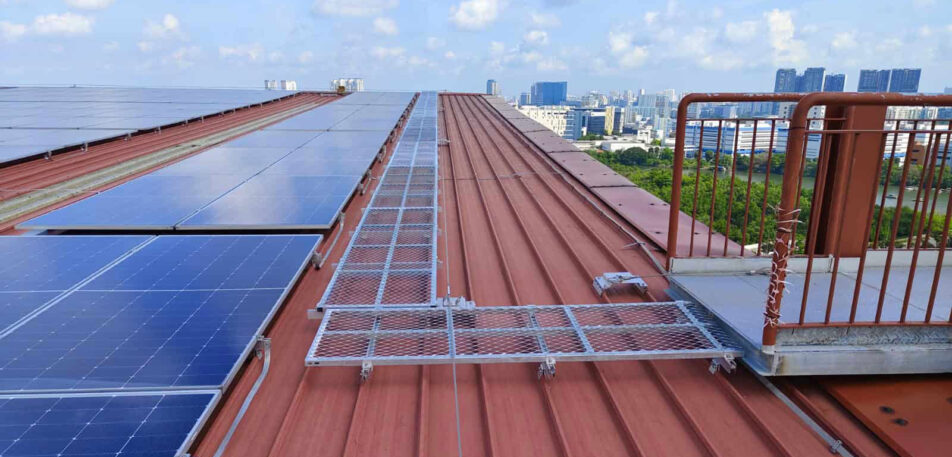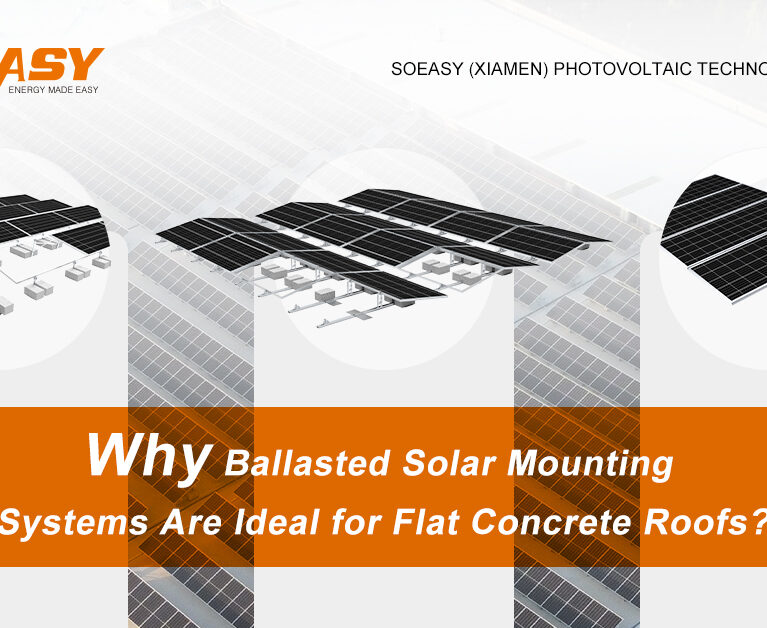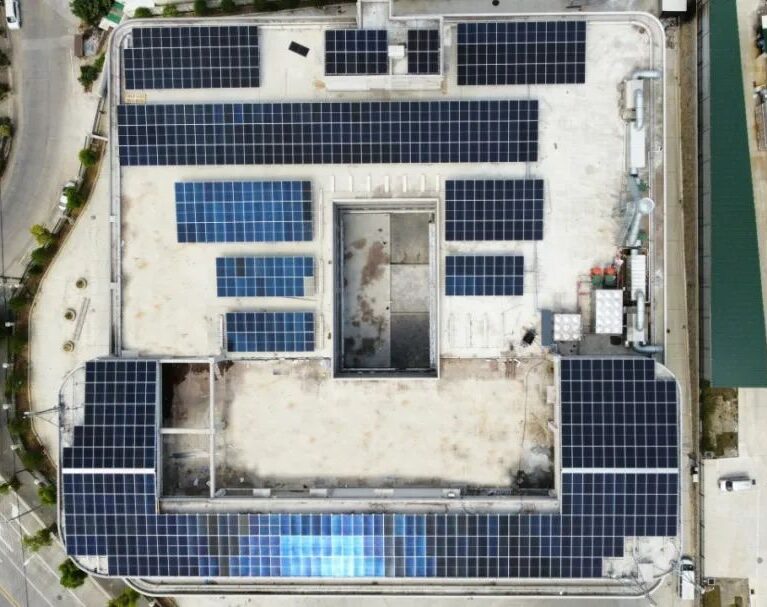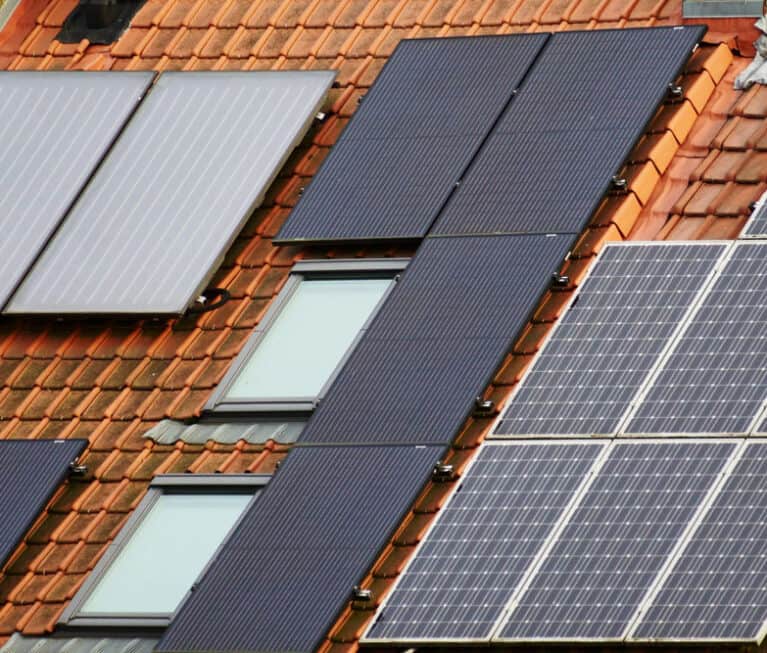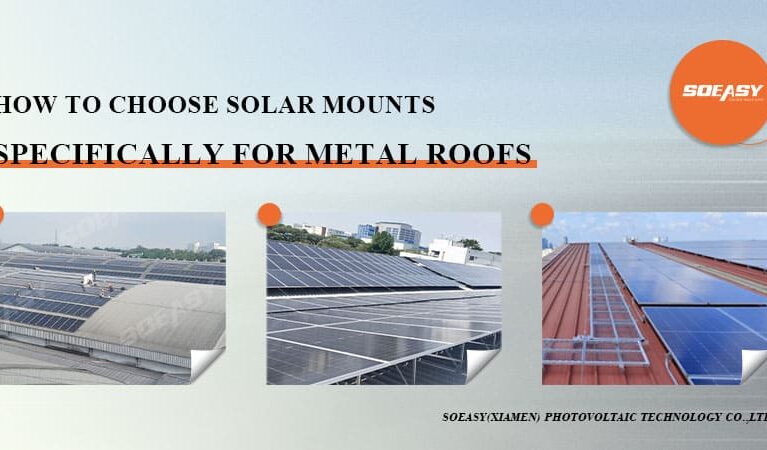Standing seam metal roofs, celebrated for their durable raised seam design, superior waterproofing, and robust structure, have emerged as a top choice for homeowners looking to install solar panels on roof surfaces. For a solar system for house to thrive on such roofs, precise selection of components—especially solar panel roof mounts and pv panel mounting brackets—is critical. This guide breaks down how to choose a solar system that balances roof protection, efficiency, and longevity for standing seam metal roofs.
Core Considerations: Matching Solar Systems to Roof Characteristics
The key advantage of standing seam metal roofs lies in their “non-penetrating” potential, making them ideal for solar installations. Every decision, from solar panel roof mounts to panel layout, must prioritize preserving the roof’s integrity while maximizing energy output.
1. Prioritize Structural Compatibility
- Seam Type Matching: Standing seam roofs feature two main seam types: “mechanically seamed” (rigid edges) and “field-formed” (flexible edges). For mechanically seamed roofs, rigid clamps work best; field-formed seams require elastic clamps with cushioning pads to prevent deformation. Your pv panel mounting brackets must align with the seam type to ensure a secure fit.
- Load-Bearing Checks: Before installing, confirm the roof’s purlin spacing and metal sheet thickness (ideally ≥0.3mm). The total weight of the solar system—including panels, solar panel roof mounts, and clamps—should stay within 15-20kg/㎡ to avoid exceeding load limits.
- Slope Adaptability: Most standing seam roofs have slopes between 5°-30°. Choose solar panel roof mounts with angle adjustment features to match the slope. For slopes over 20°, add anti-slip components to prevent sliding during installation.
2. Avoid Leakage: Reject Destructive Installation Practices
- Stick to Non-Penetrating Principles: Drilling into standing seam roofs risks leaks—always opt for “seam-clamping” solutions. High-quality pv panel mounting brackets use clamp-based designs, with EPDM waterproof pads to prevent direct metal-to-metal contact (reducing rust and friction).
- Electrochemical Compatibility: Ensure solar panel roof mounts and clamps (e.g., aluminum alloy, 304 stainless steel) are compatible with the roof’s metal (e.g., galvanized steel, aluminum-magnesium-manganese). Mismatched metals cause electrochemical corrosion, damaging the waterproof layer over time.
System Component Selection: From Clamps to Panels
A reliable standing seam roof solar system depends on cohesive component compatibility. Here’s how to select each part:
1. Clamps & Mounts: The Foundation of Stability
- Clamp Selection:
- Material: Choose high-strength aluminum alloy (lightweight, corrosion-resistant) or stainless steel (ideal for coastal areas with salt spray). Avoid ordinary carbon steel, which rusts easily and compromises load-bearing.
- Clamping Force: Match clamp size to seam height (38mm, 50mm, 76mm are common). Clamps must deliver ≥500N static force and pass Level 12 wind load tests (≥2.4kPa) for durability.
- Adjustability: Opt for clamps with ±5mm lateral fine-tuning to offset roof installation errors, ensuring pv panel mounting brackets align perfectly.
- Solar Panel Roof Mounts:
- Structure: Skip ground mounts—choose “roof-integrated lightweight systems” with keel spacing matching panel dimensions (e.g., 1.6m panels pair with 1.5m keels).
- Angle Flexibility: Mounts should support ±15° adjustment to align with your latitude’s optimal tilt (local latitude ±5°). High-latitude homes benefit from manual seasonal adjustment (steeper in winter, shallower in summer).
- Wind Resistance: Use reinforced bolts (M8+) with locknuts to secure mounts to clamps, preventing displacement in strong winds.
2. Solar Panels: Balancing Size, Weight, and Efficiency
For a solar system for house on a standing seam roof:
- Size & Layout: Match panel dimensions to roof seam spacing (600mm-1200mm). For 800mm seams, panels under 1600mm×1000mm prevent uneven stress on mounts.
- Weight: Monocrystalline/polycrystalline panels weigh 18-20kg each; thin-film panels weigh 12-15kg. If roof load is limited, choose lightweight thin-film (balance with conversion efficiency).
- Weather Resistance: Select panels with salt spray and ammonia corrosion certifications, especially in coastal or industrial areas. Corrosion-resistant frames and backsheets extend lifespan.
3. Auxiliary Materials: Details That Matter
- Cable Management: Use non-drilling cable clamps to route wires along seams or mount keels, avoiding direct contact between cables and roof metal (prevents insulation wear from thermal expansion).
- Grounding: Pair copper terminals with roof metal via clamps, ensuring grounding resistance ≤4Ω to reduce lightning risks—a must for any home solar system.
Compatibility Verification: Prep Work Before Installation
Before finalizing pv panel mounting brackets or panels, conduct on-site surveys to ensure “zero conflict” between the system and roof:
- Measure seam height, spacing, and straightness (allowable deviation ≤3mm/m). Avoid installing clamps on bulges, depressions, or rusted areas.
- Check roof orientation (due south is best; east/west deviation ≤30° works) and obstacle heights (trees, buildings). This data guides panel power selection and ensures optimal sunlight exposure for your home solar system.
Optimization Strategies: Boost Efficiency & Lifespan
1. Efficiency Tweaks
- High-Latitude Regions: Use adjustable-tilt solar panel roof mounts (winter: latitude +10°; summer: latitude -10°) with high-efficiency monocrystalline panels (≥23% conversion) to counter shorter daylight hours.
- Coastal Areas: Prioritize corrosion-resistant materials (stainless steel clamps, aluminum mounts) to withstand salt exposure, ensuring a 20+ year lifespan.
2. Lifespan & Maintenance
- Component Synchronization: Choose mounts and clamps with ≥20-year warranties (matching panel lifespan) to avoid early replacement costs—critical for long-term solar system for house value.
- Easy Maintenance: Opt for quick-release clamps that detach without damaging seams, simplifying roof inspections or panel swaps and reducing secondary roof damage.
Conclusion: Protect Your Roof, Maximize Solar Returns
Selecting a solar system for standing seam metal roofs is all about balancing roof protection and energy efficiency. From matching pv panel mounting brackets to seam types, adjusting mount angles for sunlight, to verifying corrosion resistance, every choice impacts performance. By prioritizing non-penetrating solar panel roof mounts, compatible materials, and region-specific optimizations, you’ll create a system that turns your roof into a reliable, long-term energy source.
Ready to install solar panels on roof? With the right components and planning, your standing seam metal roof can support a high-efficiency solar system for house that delivers decades of clean energy—and peace of mind.
Soeasy solar standing metal roof mounting system:Standing Seam :Apollo SEAM – soeasypv.com
Soeasy solar roof mounting system accessories: Solar Accessories – soeasypv.com
commercial solar roof mounting cases: Roof PV Projects – soeasypv.com
Soeasy solar roof mounting system accessories: Solar Accessories – soeasypv.com
commercial solar roof mounting cases: Roof PV Projects – soeasypv.com
Contact us, and our professional team will customize an exclusive solar roof mounting system for you:Contact Us – soeasypv.com
Contact us! The SOEASY Solar team provides you with free consulting services and solar energy solutions, with a rapid response within 12 hours.
 English
English 

